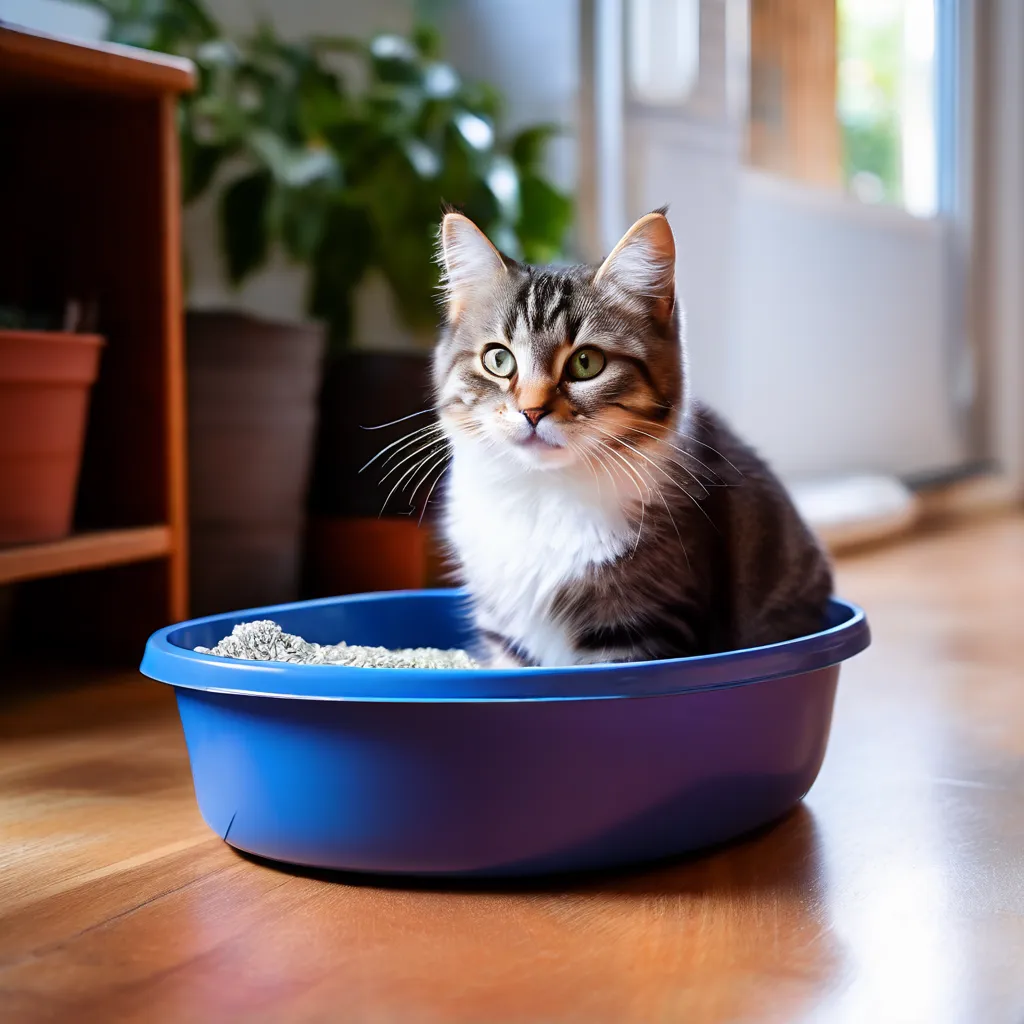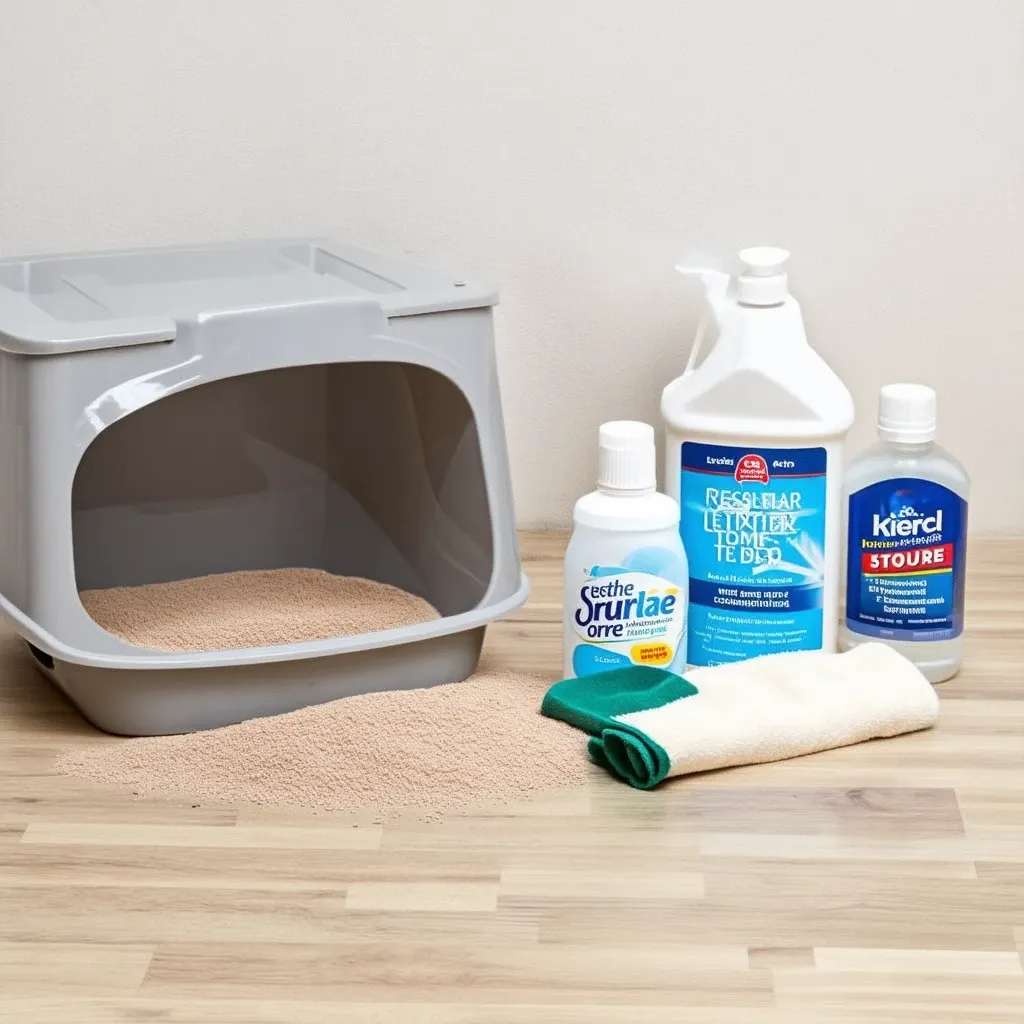Introduction
As a responsible cat owner, it’s essential to prioritize your cat’s health and hygiene. One crucial aspect of cat care is maintaining a clean litter box. But how often should you clean a cat litter box? The answer to this question is more complex than you might think.
A dirty litter box can lead to a range of health problems for your cat, including urinary tract infections, kidney stones, and even behavioral issues. On the other hand, a clean litter box can help prevent these problems and keep your cat happy and healthy.
In this article, we’ll explore the importance of cleaning a cat litter box and provide guidance on how often to clean it. We’ll also discuss the different types of cleaning tasks, including daily scooping, frequency of litter changes, and deep cleaning.
Whether you’re a seasoned cat owner or a newcomer to the world of feline companionship, this article will provide you with the knowledge and tools you need to keep your cat’s litter box clean and hygienic.

By the end of this article, you’ll know exactly how often to clean a cat litter box and how to keep it clean and hygienic. So, let’s get started!
Daily Cleaning Tasks: Scooping Out Waste
Scooping out waste is an essential daily cleaning task that helps maintain a hygienic litter box for your cat. This task involves removing solid waste and clumps from the litter box, usually on a daily basis.
Why Scooping Out Waste is Important
Scooping out waste is crucial for several reasons:
- Prevents Odor and Mess: Removing solid waste and clumps helps prevent unpleasant odors and messes from spreading throughout the litter box.
- Maintains Litter Box Hygiene: Scooping out waste ensures the litter box remains clean and hygienic, reducing the risk of bacterial and fungal growth.
- Keeps Your Cat Healthy: A clean litter box is essential for your cat’s health and well-being. Unclean litter boxes can lead to urinary tract infections and other health issues.
How to Scoop Out Waste Effectively
To scoop out waste effectively:
- Use a Scoop or Shovel: Use a scoop or shovel specifically designed for cat litter to remove solid waste and clumps.
- Remove Solid Waste and Clumps: Carefully remove all solid waste and clumps from the litter box, taking note not to spill any litter in the process.
- Dispose of Waste Properly: Dispose of the removed waste in a trash can or designated waste bin.
Tips for Scooping Out Waste
- Scoop Out Waste Daily: Scoop out waste at least once a day, or more often if you have multiple cats.
- Use the Right Litter: Choose a litter that is easy to scoop and forms clumps well, making it easier to remove waste.
- Clean the Scoop: Clean the scoop or shovel regularly to prevent bacterial growth and odors.
By following these tips and making scooping out waste a part of your daily routine, you can help maintain a clean and hygienic litter box for your cat.

Frequency of Litter Changes
The frequency of litter changes is a crucial aspect of maintaining a clean and hygienic litter box for your cat. While scooping out waste daily is essential, changing the litter completely is also necessary to prevent the buildup of bacteria, odors, and moisture.
How Often to Change Cat Litter
The frequency of litter changes depends on several factors, including the type of litter, the number of cats using the litter box, and the individual cat’s habits. Here are some general guidelines:
- For clumping clay litter, change the litter completely every 7-10 days.
- For non-clumping clay litter, change the litter completely every 5-7 days.
- For natural or biodegradable litters, change the litter completely every 5-7 days.
- For cats that produce a lot of waste or have accidents outside of the litter box, change the litter more frequently, every 3-5 days.
Why Change Cat Litter Frequently
Changing cat litter frequently is essential for several reasons:
- Prevents the buildup of bacteria and odors
- Reduces the risk of urinary tract infections and other health problems
- Keeps the litter box clean and hygienic
- Prevents moisture from accumulating and causing mold and mildew
Tips for Changing Cat Litter
- Always wear gloves when changing cat litter to prevent the risk of toxoplasmosis
- Scoop out as much of the old litter as possible before adding new litter
- Clean the litter box thoroughly with soap and water before adding new litter
- Consider using a litter box with a removable top or a scoopable litter to make changing the litter easier
By following these guidelines and tips, you can keep your cat’s litter box clean and hygienic, and prevent the buildup of bacteria, odors, and moisture.
Deep Cleaning the Litter Box: How Often and Why
Deep cleaning the litter box is an essential part of maintaining a hygienic and healthy environment for your cat. While daily scooping and regular litter changes are crucial, deep cleaning the litter box provides a more thorough sanitizing of the area.
So, how often should you deep clean the litter box? The frequency of deep cleaning depends on several factors, including the number of cats using the litter box, the type of litter used, and the individual cat’s habits. As a general rule, it’s recommended to deep clean the litter box every 7-10 days.
Why is deep cleaning the litter box so important? Here are a few reasons:
- Removes bacteria and odors: Deep cleaning the litter box helps eliminate bacteria, viruses, and fungi that can cause illnesses in cats. It also removes lingering odors that can be unpleasant for both you and your cat.
- Prevents health issues: A dirty litter box can lead to health issues in cats, such as urinary tract infections, respiratory problems, and skin conditions. Deep cleaning the litter box helps prevent these issues by keeping the area clean and free of pathogens.
- Reduces stress: A clean litter box can reduce stress in cats, which can lead to behavioral problems and other health issues.
To deep clean the litter box, follow these steps:
- Remove all litter and waste from the litter box.
- Wash the litter box with mild detergent and warm water.
- Rinse the litter box thoroughly to remove any soap residue.
- Disinfect the litter box with a pet-safe disinfectant.
- Let the litter box air dry before refilling it with fresh litter.
Remember, deep cleaning the litter box is an essential part of maintaining a healthy and happy cat. By following these guidelines, you can keep your cat’s litter box clean and hygienic.

A Cleaning Schedule for a Hygienic Litter Box
Creating a cleaning schedule for your cat’s litter box is essential to maintain a hygienic environment for your pet. A clean litter box can help prevent the spread of diseases and keep your cat healthy. Here’s a suggested cleaning schedule for a hygienic litter box:
Daily Cleaning
- Scoop out solid waste and clumps daily, ideally at the same time each day.
- Remove any debris or dirt that may have accumulated in the litter box.
- Refill litter as needed to maintain the recommended depth.
Weekly Cleaning
- Change the litter completely every 7-10 days.
- Clean the litter box with mild detergent and warm water.
- Rinse the litter box thoroughly to remove any soap residue.
Deep Cleaning
- Every 1-2 months, perform a deep clean of the litter box.
- Soak the litter box in a mixture of equal parts water and white vinegar for 10-15 minutes.
- Scrub the litter box with a non-abrasive brush to remove any stubborn stains or odors.
- Rinse the litter box thoroughly and let it air dry.
Additional Tips
- Always wash your hands after handling the litter box or your cat’s waste.
- Keep the litter box in a well-ventilated area to prevent the buildup of ammonia fumes.
- Consider using a litter box with a built-in filter or odor-absorbing material to reduce odors.
By following this cleaning schedule, you can help keep your cat’s litter box clean and hygienic, reducing the risk of disease and keeping your pet healthy.
Conclusion
Cleaning your cat’s litter box is an essential part of maintaining their health and happiness. By following the guidelines outlined in this article, you can ensure that your cat’s litter box is always clean and hygienic.
Remember, daily cleaning tasks such as scooping out waste and clumps are crucial in preventing the buildup of bacteria and odors. Additionally, changing the litter completely every 7-10 days and deep cleaning the litter box every 1-2 months can help keep your cat’s litter box clean and fresh.
By creating a cleaning schedule and sticking to it, you can help prevent accidents and messes outside of the litter box. This will not only make your life easier but also keep your cat happy and healthy.
So, how often should you clean a cat litter box? The answer is simple: clean it every day, change the litter completely every 7-10 days, and deep clean it every 1-2 months. By following these simple steps, you can keep your cat’s litter box clean and hygienic, and ensure that your cat stays happy and healthy.

















